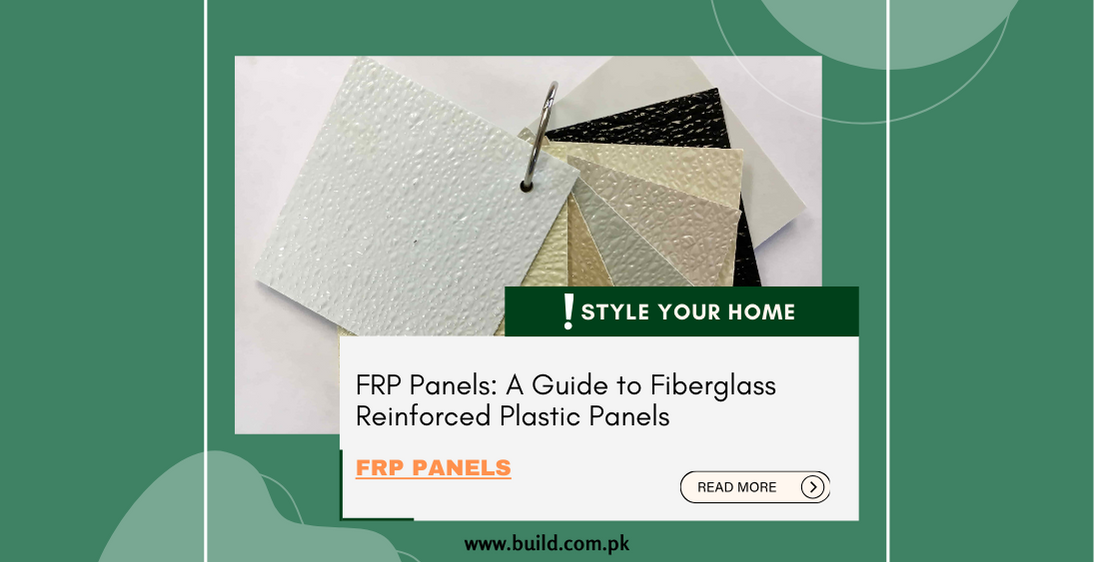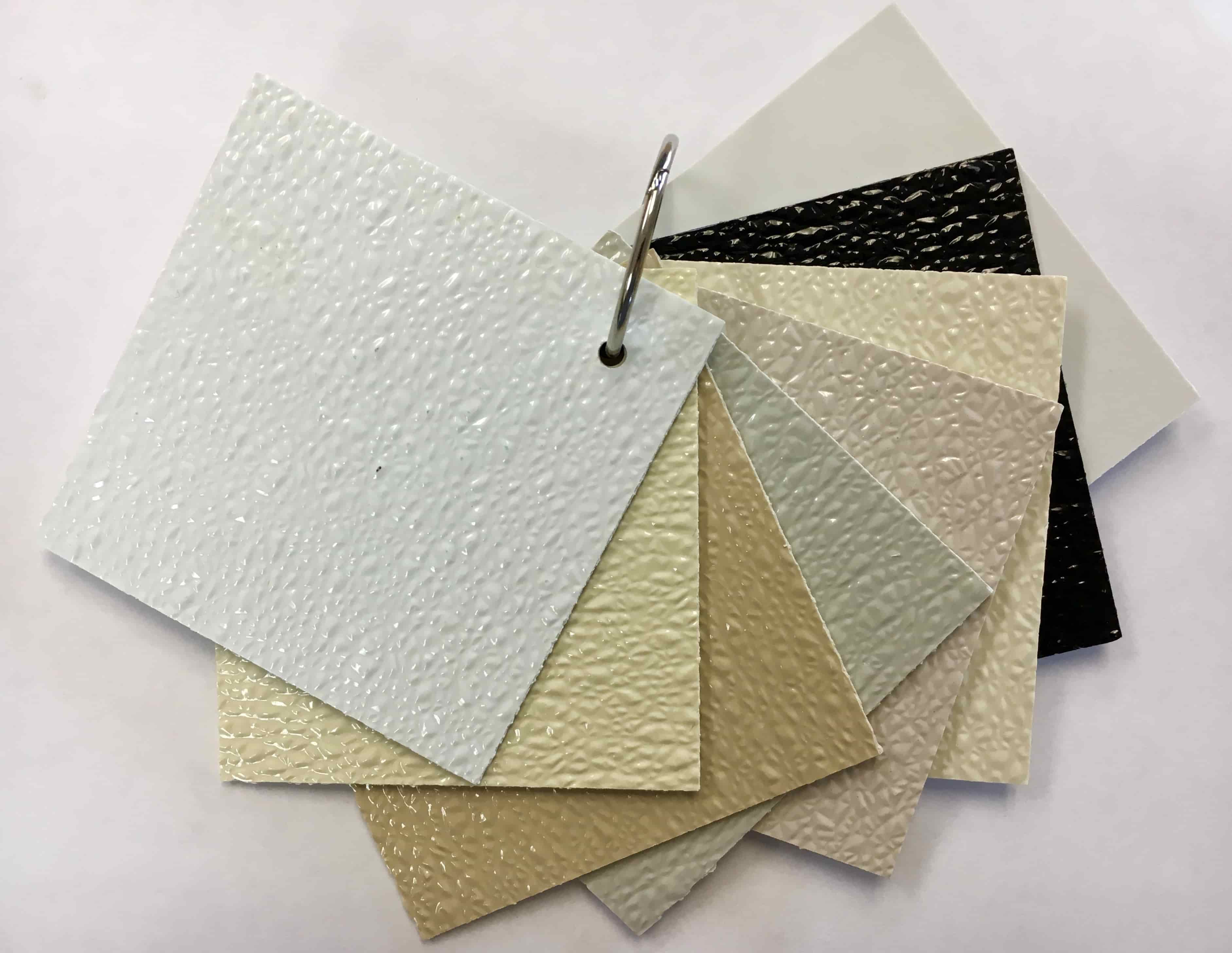FRP Panels: A Guide to Fiberglass Reinforced Plastic Panels

Introduction:
In the world of construction and design,
materials that offer durability, versatility, and aesthetic appeal are highly
sought after. One such material that has gained popularity in recent years is
Fiberglass Reinforced Plastic (FRP). FRP panels, also known as fiberglass panels,
offer a wide range of benefits and applications across various industries. In
this detailed blog, we'll explore the world of FRP panels, covering everything
from their composition and manufacturing process to their uses, advantages, and
installation methods.
Understanding FRP Panels:
FRP panels are composite materials
made from a combination of fiberglass reinforcement and a thermosetting resin
matrix. The fiberglass reinforcement provides strength and rigidity, while the
resin matrix binds the fibers together and provides protection against
environmental factors such as moisture, chemicals, and UV radiation. FRP panels
are available in various thicknesses, sizes, and colors, making them suitable
for a wide range of applications in both residential and commercial settings.

Composition of FRP Panels
FRP panels typically consist of
the following components:
Fiberglass Reinforcement:
The fiberglass reinforcement in FRP
panels consists of thin strands of glass fibers that are woven together or
randomly dispersed in a matrix. These fibers provide strength and structural
integrity to the panels, making them durable and resistant to impact and
deformation.
Resin Matrix:
The resin matrix in FRP panels acts as a
binding agent that holds the fiberglass reinforcement together and provides
protection against environmental factors. Common resin matrices used in FRP
panels include polyester, vinyl ester, and epoy resins, each offering
different properties and performance characteristics.
Surface Finish:
FRP panels may feature a variety of surface
finishes to enhance their appearance and performance. These finishes can
include smooth, textured, or embossed surfaces, as well as gel coats or
protective coatings for added durability and UV resistance.
Manufacturing Process of FRP Panels
The manufacturing
process of FRP panels typically involves the following steps:
Fiber Reinforcement:
The fiberglass reinforcement is prepared
by weaving or aligning glass fibers into a specific pattern or orientation. The
fibers may be pre-impregnated with resin or applied as dry mats or fabrics.
Resin Application:
The resin matrix is applied to the
fiberglass reinforcement using various methods such as hand lay-up, spray-up,
or vacuum infusion. The resin is evenly distributed and impregnates the fibers
to form a solid composite material.
Curing:
The FRP panel is cured or hardened by exposing it to
heat or ultraviolet UV) radiation. This process activates the resin matrix,
causing it to polymerize and bond with the fiberglass reinforcement, forming a
strong and durable composite material.
Finishing:
Once cured, the FRP panel may undergo additional
finishing processes such as trimming, sanding, or painting to achieve the
desired appearance and surface texture.
Uses and Applications of FRP Panels
FRP panels are used in a
wide range of applications across various industries, including:
Building Construction:
FRP panels are commonly used in
building construction for applications such as wall cladding, roofing, and
façade systems. They offer durability, weather resistance, and aesthetic
appeal, making them ideal for both interior and exterior use.
Transportation:
FRP panels are used in the transportation
industry for applications such as vehicle body panels, flooring, and interior
components. They offer lightweight construction, impact resistance, and
corrosion resistance, making them suitable for use in buses, trucks, and
recreational vehicles.
Industrial:
FRP panels are used in industrial settings for
applications such as chemical storage tanks, piping systems, and equipment
enclosures. They offer excellent chemical resistance, thermal stability, and
dimensional stability, making them ideal for harsh environments.
Advantages of FRP Panel
FRP panels offer several advantages
over traditional building materials, including:
Lightweight: FRP panels are lightweight and easy to handle,
reducing installation time and labor costs.
High Strength-to-Weight Ratio: Despite their lightweight
construction, FRP panels offer high strength and rigidity, making them suitable
for structural applications.
Corrosion Resistance: FRP panels are resistant to corrosion,
rot, and decay, makin them ideal for use in humid or corrosive environments.
Versatility: FRP panels are available in a wide range of
colors, textures, and finishes, allowing for customization to suit specific
design requirements.
Low Maintenance: FRP panels require minimal maintenance and
are easy to clean, reducing ongoing maintenance costs and efforts.
Installation Methods for FRP Panels
FRP panels can be
installed using various methods depending on the application and requirements.
Common installation methods include:
Adhesive Bonding:
FRP panels can be adhered directly to
substrates such as drywall, plywood, or concrete using adhesives or
construction adhesives. This method is ideal for wall cladding or ceiling
applications.
Mechanical Fastening:
FRP panels can be mechanically fastened
to substrates using screws, nails, or bolts. This method provides additional
strength and stability and is commonly used for roofing or siding applications.
Panel Joining:
FRP panels can be joined together using
adhesives, sealants, or mechanical fasteners to create seamless transitions
between panels. This method is commonly used for larger installations or when
continuous surfaces are desired.
Conclusion:
FRP panels offer a versatile and durable solution for a wide range of applications in construction, transportation, and industrial settings. With their lightweight construction, high strength-to-weight ratio, and corrosion resistance, FRP panels provide an attractive alternative to traditional building materials. By understanding the composition, manufacturing process, uses, advantages, and installation methods of FRP panels outlined in this blog, you can make informed decisions when incorporating FRP panels into your next project. Whether you're cladding a building façade, retrofitting a vehicl interior, or upgrading industrial equipment, FRP panels offer a cost-effective and sustainable solution for your design and construction needs









